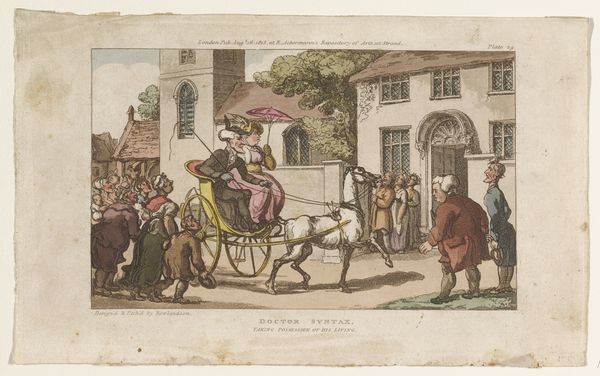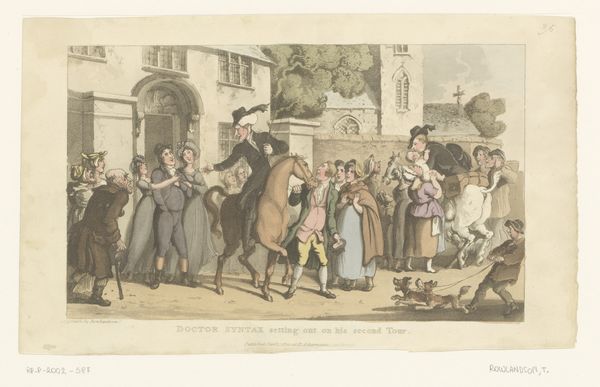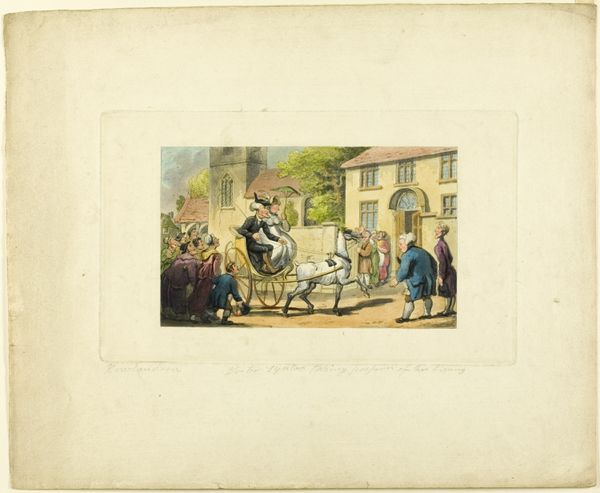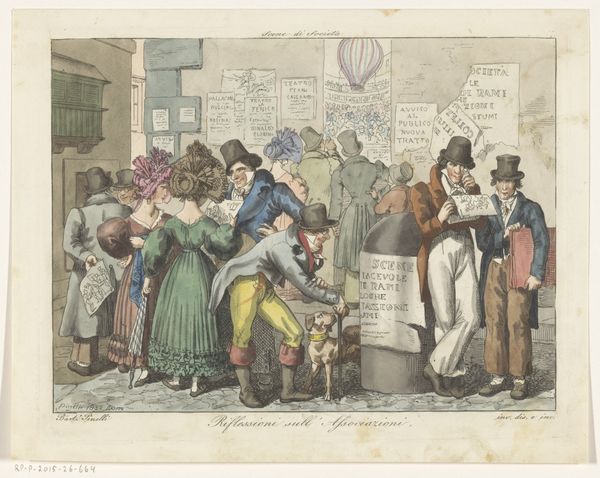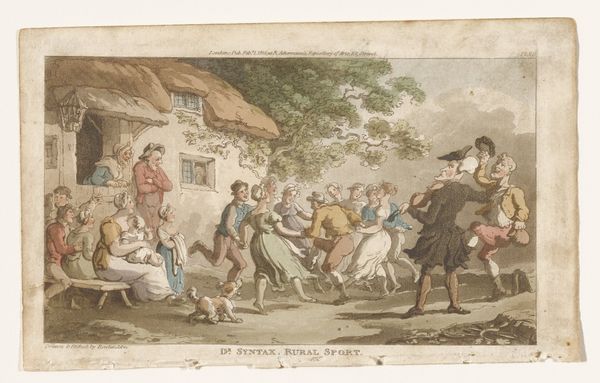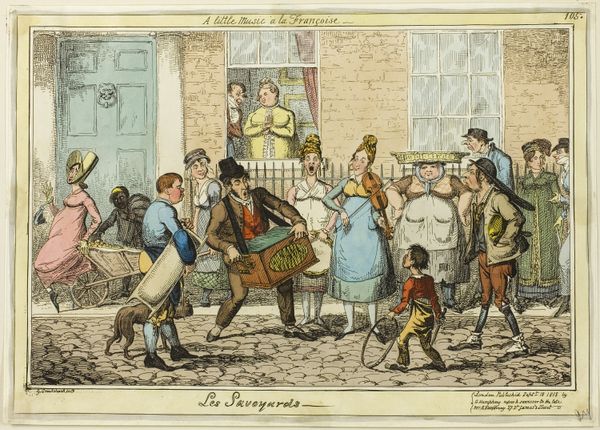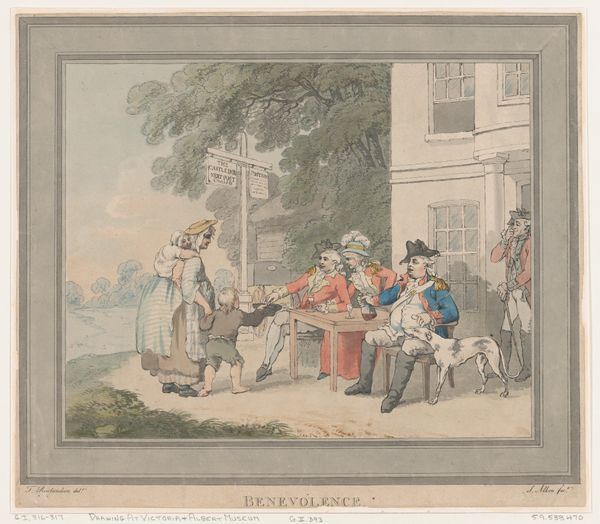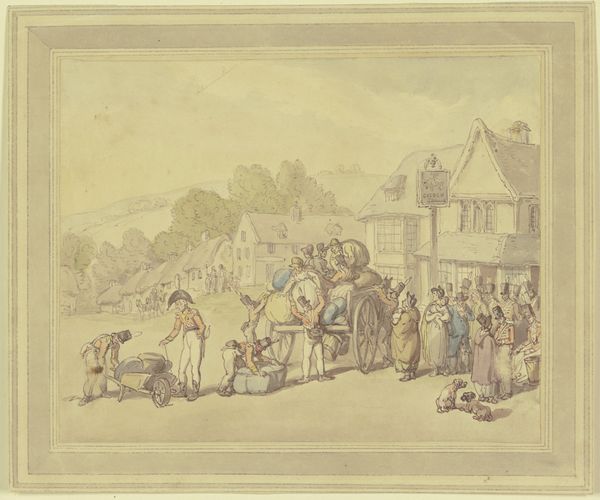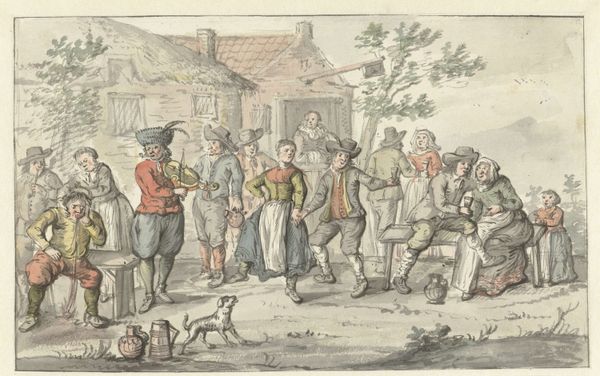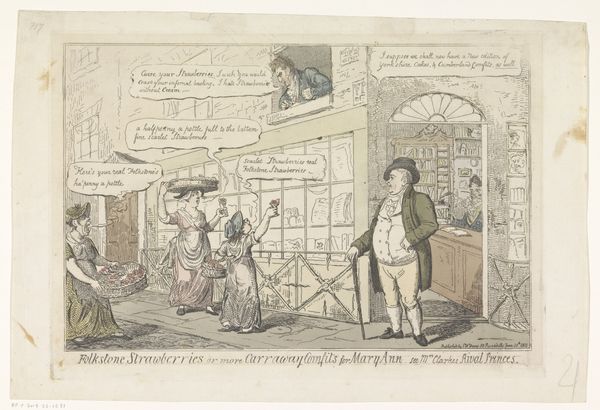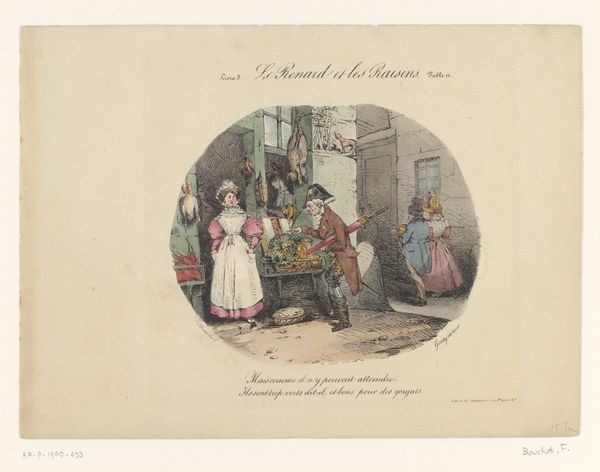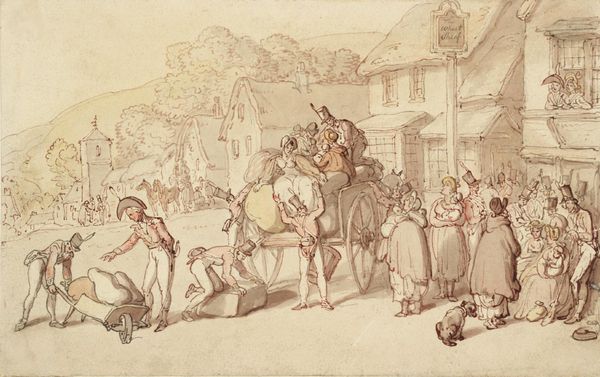
print, watercolor
#
narrative-art
# print
#
caricature
#
watercolor
#
romanticism
#
cityscape
#
watercolour illustration
#
genre-painting
Dimensions: height 147 mm, width 244 mm
Copyright: Rijks Museum: Open Domain
Editor: This is Thomas Rowlandson's 1819 print, "Doctor Syntax en zijn vrouw rijden naar de domineeswoning," held at the Rijksmuseum. It seems like a humorous, busy scene; a sort of countryside meet-and-greet, but with quite a lot of pomp! What strikes you most about this work? Curator: Beyond the humor, I see a pointed commentary on class and social performance in early 19th-century England. Look at the exaggerated expressions and caricatured figures. What power dynamics are being performed here? Editor: I guess I see the performance... it does feel overdone, staged somehow. Is it meant to be satirical? Curator: Precisely! Consider Doctor Syntax, the central figure. His exaggerated clerical attire, the over-the-top carriage, and the gawking townspeople... Rowlandson is critiquing the performative nature of social hierarchy. It challenges the perceived "naturalness" of class distinctions, showing how they are constructed and maintained through spectacle. Notice how the artist subtly emphasizes Doctor Syntax's self-importance versus the slightly desperate attempts of the lower classes to appear civil and welcoming. What does that reveal? Editor: That maybe wealth and social standing are something you put on, and that society is organised that way on purpose? Curator: Yes, precisely! And it encourages us to question those structures even today, who is allowed in what spaces, who gets access and why. What have you noticed that you might have missed? Editor: Well, I didn't think too deeply about it initially. But now, it seems like there's more to this cheerful image than I thought, something much more serious and real, really. Curator: Exactly. Art allows us to interrogate social norms, making the invisible structures visible.
Comments
No comments
Be the first to comment and join the conversation on the ultimate creative platform.
